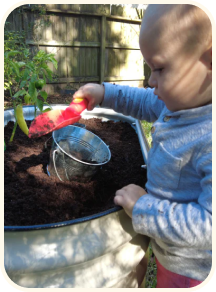Crafting the Perfect Raised Garden Bed: Layout and Design Tips and Techniques
In the world of gardening, raised beds have emerged as a popular choice for both novice gardeners and seasoned horticulturists alike.
Their practicality, versatility, and efficiency make them an attractive option for growing a variety of plants, from vegetables and herbs to flowers and shrubs.
However, creating an effective raised-bed layout requires careful planning and consideration of several key factors. In this guide, we'll explore the art of raised-bed layout and design, offering insights and tips to help you maximize your garden's potential.
Location, location, location

The first step in designing your raised-bed garden is selecting the ideal location.
Choose a spot that receives ample sunlight throughout the day, as most plants thrive in full sun conditions. Additionally, ensure that the area has good drainage to prevent waterlogging, which can lead to root rot and other issues.
Consider the proximity to water sources as well, as you'll need easy access for watering your plants. If possible, position your raised beds close to a water spigot or invest in a drip irrigation system for efficient watering.
Size and shape

When it comes to raised-bed size and shape, there's no one-size-fits-all approach. The dimensions of your beds will depend on factors such as available space, the types of plants you wish to grow, and your personal preferences.
In general, aim for raised beds that are no wider than 4 feet to ensure easy access from all sides without the need to step into the bed itself. As for length, consider the reach of your arms to make maintenance tasks more manageable.
As for shape, rectangular or square beds are the most common choice due to their simplicity and ease of construction. However, don't be afraid to get creative with curved or tiered designs for added visual interest.
Soil quality and preparation
One of the greatest benefits of raised-bed gardening is the ability to control the soil quality, ensuring optimal growing conditions for your plants. Before filling your beds, take time to assess your soil's composition and pH levels.
Ideally, your soil should be loose, well-draining, and rich in organic matter. If your existing soil is lacking in any of these qualities, consider amending it with compost, peat moss, or aged manure to improve its texture and fertility.
When filling your raised beds, aim for a mix of topsoil, compost, and other organic matter to provide essential nutrients and promote healthy plant growth. Avoid using soil from unknown sources, as it may contain weed seeds or pathogens that could harm your plants.
Companion planting and crop rotation
Once your raised beds are in place and filled with soil, it's time to consider the layout of your plants. Companion planting, the practice of growing certain plants together to benefit one another, can help improve yields, deter pests, and promote overall garden health.
Research companion planting combinations that are well-suited to your climate and the types of plants you're growing. For example, planting basil alongside tomatoes can enhance the flavor of the fruit and repel pests such as aphids and hornworms.
In addition to companion planting, incorporating crop rotation into your raised bed layout can help prevent soil depletion and reduce the risk of disease buildup. Rotate your crops each season to different areas of the garden to maintain soil fertility and balance.
Vertical gardening techniques

In small or space-limited gardens, vertical gardening techniques can help maximize growing space and increase yields. Consider incorporating trellises, arbors, or other vertical structures into your raised bed layout to support vining plants such as cucumbers, peas, and beans.
By training these plants to grow vertically, you can free up valuable ground space for other crops while also improving air circulation and reducing the risk of fungal diseases. Just be sure to choose sturdy supports that can withstand the weight of mature plants and fruit.
Accessibility and maintenance
Finally, don't forget to consider accessibility and maintenance when designing your raised-bed layout. Ensure that your beds are easily accessible from all sides, with wide enough pathways for wheelbarrows and garden tools.
Consider incorporating features such as drip irrigation systems, mulch, and weed barriers to minimize maintenance tasks and conserve water. Regularly monitor your raised beds for signs of pests, diseases, and nutrient deficiencies, and address any issues promptly to prevent them from spreading.
Final thoughts

In conclusion, raised-bed gardening offers numerous advantages for gardeners of all skill levels, from improved soil quality and drainage to increased yields and reduced maintenance.
By carefully planning and designing your raised-bed layout, you can create a productive and beautiful garden that will provide you with fresh, homegrown produce for years to come.





























Leave a comment